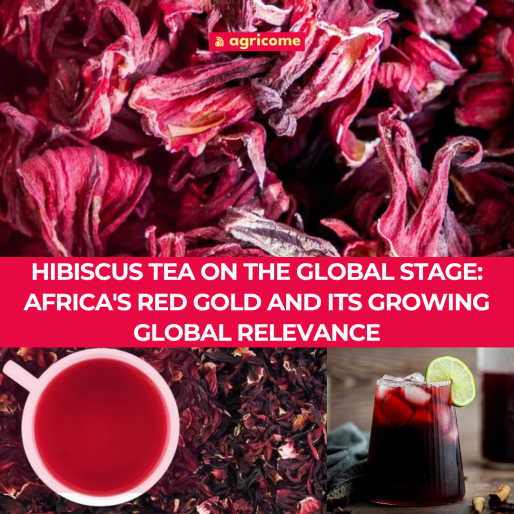Over the last decade, hibiscus tea has earned its place on the global wellness stage as one of the most sought-after herbal infusions. Known for its vibrant crimson hue, tangy flavor, and health benefits—including blood pressure regulation and antioxidant properties—hibiscus has attracted increasing attention from global consumers, particularly in Europe, North America, and parts of Asia. Yet behind this blooming demand lies a critical African narrative: one of underutilized potential, inconsistent supply chains, and untapped economic opportunity.
Africa—particularly Nigeria, Sudan, Egypt, and Senegal—accounts for over 90% of the world’s hibiscus production, according to trade data from the International Trade Centre (ITC) and the African Development Bank (AfDB). Nigeria alone contributes approximately 70–75% of the global supply, exporting to major markets like Mexico, Germany, the United States, and China. Between 2014 and 2023, Nigeria exported over 1,000 metric tons of dried hibiscus annually, peaking at around 2,000 metric tons in 2021 with an estimated market value exceeding $35 million.
Despite its dominance in raw hibiscus production, Africa continues to trail in value addition and branding, which remain concentrated in import-destination countries. While producers in Africa typically earn between $0.60–$1.50 per kilogram of dried hibiscus, the same product—once branded and packaged as premium wellness tea—can retail for $20–$30 per kilogram abroad. The bulk-export model deprives local farmers and traders of value chain leverage, stalling economic transformation at the grassroots level.
Several bottlenecks compound this issue. Inconsistent quality standards, post-harvest losses, poor storage facilities, and lack of traceability mechanisms weaken Africa’s competitive edge in international markets. Feedback from major buyers in Germany and Japan underscores a growing demand for certified organic hibiscus with consistent color, moisture content, and purity. However, certification processes remain costly and out of reach for many smallholder farmers.
Moreover, the absence of organized cooperatives and limited access to export financing restrict African producers’ ability to scale production or negotiate favorable trade terms. Even as demand rises, particularly with growing awareness of natural remedies post-COVID-19, African suppliers often miss out on long-term contracts due to irregular supply and inadequate packaging infrastructure.
International bodies like the Food and Agriculture Organization (FAO), ITC, and the International Trade Centre’s SheTrades initiative have all highlighted hibiscus as a high-potential export crop from Africa. Their recommendations include scaling investment in processing technology, establishing national residue monitoring systems for compliance, and developing local certification schemes aligned with EU and U.S. standards.
The way forward lies in rethinking hibiscus not just as a commodity, but as an economic lever. Public-private partnerships can play a pivotal role in setting up processing hubs, promoting fair trade certification, and educating farmers on global standards. Governments, too, must invest in trade infrastructure and policy frameworks that enable agro-export diversification beyond staples like cocoa and coffee.
With the right reforms, hibiscus could emerge not just as Africa’s “red gold,” but as a flagship symbol of agro-based transformation. The flower that once colored traditional drinks could well color a new era of African economic empowerment on the global stage.
